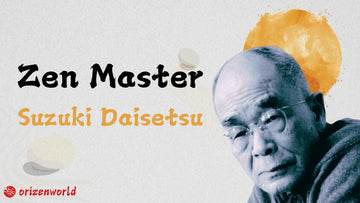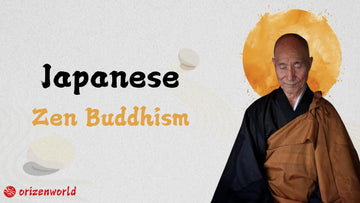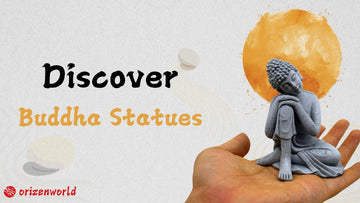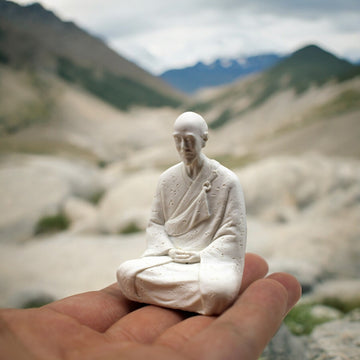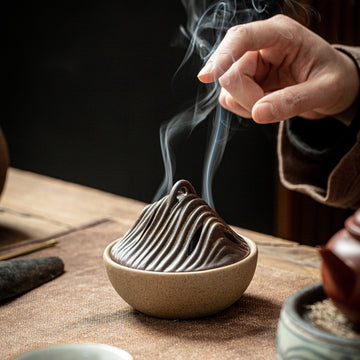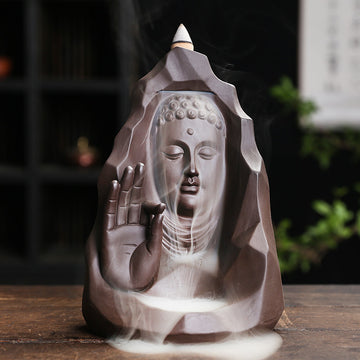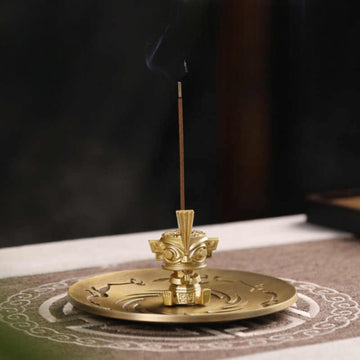During Lunar New Year or the Qing Ming Festival in China, temples and ancestral halls often become enveloped in a mystical fog. This haze comes from the burning of incense, a sacred tool used by Chinese people to pray and connect with their ancestors. Witnessing this scene can spark curiosity about the profound stories and culture behind the tradition of burning incense.
Having lived in China for many years, I’ve seen firsthand the deep historical significance and profound roots of incense culture. Today, this tradition is experiencing a renaissance, blending its ancient heritage with modern practices in Chinese society.
In this article, I’ll share fascinating insights into this enduring tradition, offering a glimpse into its history and cultural revival.
Chinese incense culture boasts a profound and extensive history, with its origins tracing back to the Zhou Dynasty (1046–256 BCE). During this era, incense was an essential element in religious rituals, ceremonies, and offerings to deities, symbolising respect, blessings, and spiritual connection. As a medium for communication with divine powers, incense also served practical purposes such as purifying spaces and warding off illnesses.

The Zhou Dynasty (1046–256 BCE) was a period deeply rooted in ritualistic practices and ceremonies. During this era, incense was invented and regarded as an exceptional medium for communication with the heavens.
The integration of Buddhism and Taoism during the Han Dynasty (206 BCE–220 CE) marked a significant development in incense culture. Buddhist practices, which emphasised purification and spiritual enlightenment, incorporated incense as an indispensable tool in worship and meditation. Taoist rituals, too, adopted incense for summoning spirits and conducting sacred ceremonies, further embedding its use into Chinese religious life.

Taoism and Buddhism view incense-burning as a vital ritual for connecting with the divine. Both traditions have strict guidelines, and incense is burned with sincere devotion. For Taoist priests and Buddhist monks, it is an essential part of their spiritual practice.
Chinese incense is available in a variety of forms, each with unique characteristics. Incense powders (香粉), often made from natural ingredients like sandalwood, are finely ground and can be used in different rituals. These powders are often mixed with other fragrant materials and are typically used to create an aromatic atmosphere in temples or during meditation.
Incense cakes (香饼), which are solid and compact, burn slowly, making them ideal for long-lasting fragrance in religious ceremonies or for personal use. Coil incense (盘香) is another popular form, consisting of incense coils wound into concentric circles. These coils are typically used in homes, temples, or meditation spaces because they release a steady stream of fragrance and burn for extended periods, creating a serene environment.
Backflow incense (倒流香) has gained popularity for its visual appeal. This type of incense burns in a way that causes the smoke to flow downward, creating an elegant cascade. It is commonly used in decorative incense burners and adds a calming and mystical atmosphere to any space.
Incense sticks (线香) have been in use since the Song and Ming Dynasties and are known for their long burning time. These sticks, often referred to as "immortal incense" or "longevity incense," were traditionally used in temples as a means of measuring time, with their length known as "香寸."
In Chinese incense culture, the tools used for burning incense are often as intricate and symbolic as the incense itself. Traditional incense burners (香炉) and holders come in various forms, each reflecting different cultural and spiritual meanings. One iconic design is the Boshan Lu (博山炉), a traditional incense burner shaped like a mountain, symbolizing the connection between heaven and earth.
These burners often feature detailed carvings and auspicious symbols, emphasizing the spiritual significance of the incense-burning ritual. They are typically used in temples or home altars to create an environment conducive to meditation and prayer.

The Boshan Lu (博山炉) is a traditional Chinese incense burner shaped like a mountain, symbolizing the connection between heaven and earth. It is often used in religious rituals and represents harmony, balance, and the spiritual journey between the divine and human realms.
Additionally, accessories such as incense spoons (香匙), tweezers (香钳), and ash presses (压香器) play essential roles in the incense ritual. The incense spoon is used to handle powdered incense, ensuring that it is delicately placed into burners without contamination. Tweezers are employed to carefully place incense sticks or cones into holders, maintaining the purity of the ritual. Ash presses help manage the ash that falls during the burning process, keeping the space clean and maintaining the aesthetic value of the incense display.
The craftsmanship involved in making incense is a meticulous and time-honored process. Skilled artisans combine natural ingredients, such as sandalwood, agarwood, and other fragrant materials, to create incense with distinct scents. The process requires precision and an understanding of the properties of each ingredient, as the right combination can result in a rich and balanced fragrance that enhances the spiritual experience.
Whether in the making of incense or its accompanying tools, Chinese incense culture highlights the deep connection between craftsmanship, spirituality, and daily life.
In modern Chinese society, incense plays a vital role in aromatizing homes and personal belongings. More and more people are burning incense to create a calming atmosphere in their living spaces, as it is believed to promote relaxation and remove negative energy. The use of incense in homes is a way to elevate the environment, offering a blend of spiritual peace and pleasant fragrance. From the living room to the bedroom, incense is burned to create a soothing ambiance that encourages harmony and tranquility in daily life.
Incense also plays a significant role in traditional Chinese medicine and health practices. One well-known practice is 艾炙 (Ai Jiao), where incense is used to stimulate specific acupoints on the body. This technique is similar to moxibustion, where heat from burning incense helps improve circulation and boost the body's healing energy. Incense is believed to have therapeutic properties that support overall well-being, providing physical and emotional relief, making it a popular remedy in various health treatments.

艾炙 (Ai Jiao) is a traditional Chinese health practice where incense is burned to stimulate acupoints on the body. It is believed to promote healing, improve circulation, and enhance overall well-being.
Furthermore, incense is widely incorporated into Chinese festivals and ceremonies. During the Qing Ming Festival, incense is burned to honor and pay respects to ancestors, ensuring their spirits are remembered. During the Spring Festival, incense is lit to invite good luck and prosperity for the coming year. These cultural traditions reflect the deep connection between incense, spirituality, and the reverence for family and deities in Chinese society.

In Chinese culture, incense rituals are closely tied to the tradition of prayer and wishes. When facing uncertainties in areas like academics, health, or career, people often visit temples to burn incense, seeking blessings for guidance, protection, and success.


